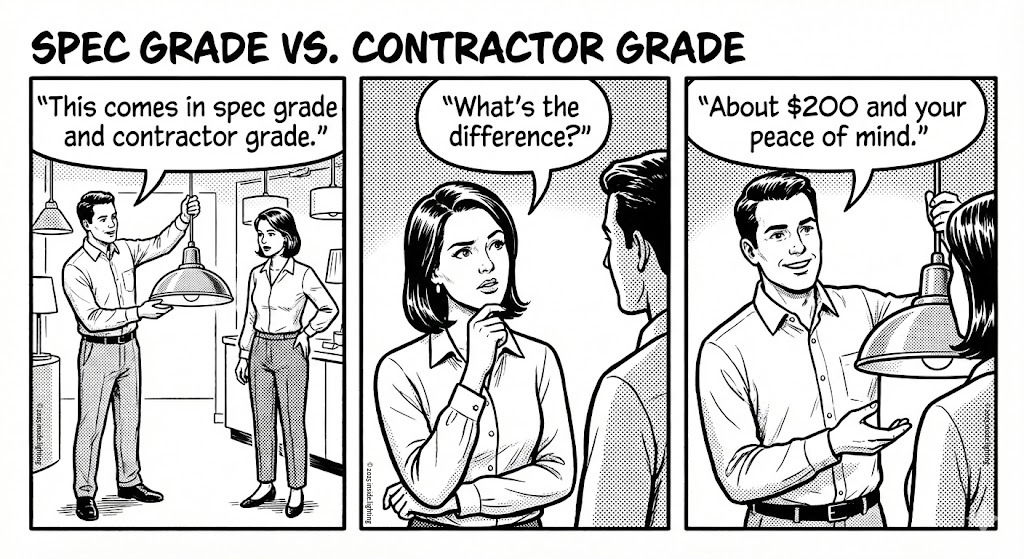March 7, 2025
Paused Again: The Mexico-Canada Tariff Rollercoaster Continues

Manufacturers, distributors & other lighting people struggle to plan as trade rules change overnight
On Tuesday morning, President Donald Trump’s 25% tariffs on goods from Mexico and Canada went into effect. By Thursday night, they were gone — at least for now. In a move that has become a hallmark of his trade policy, President Trump abruptly issued yet another pause, delaying the tariffs until April 2.
For manufacturers, suppliers, and business owners, this is the latest turn in a dizzying saga that began months ago.
With Acuity Brands set to report quarterly earnings on April 3, just one day after President Trump's next tariff decision, CEO Neil Ashe’s remarks will be closely watched. As the largest lighting company in North America, Acuity operates seven factories in Mexico and has significant exposure to cross-border trade, making it particularly vulnerable to sudden policy shifts. Whether Ashe expresses confidence or concern could provide the clearest signal yet of how companies with deep ties to Mexico are bracing for what comes next.
The Mexico-Canada Tariff Timeline
The pattern is hard to ignore.
- Last fall, then-President-elect Trump signaled that tariffs on Mexico, Canada and China were coming on Day 1 in office.
- January 20, Trump delays his Day 1 action and signals new tariffs beginning on February 1.
- February 1, his administration announced them.
- February 3, the Mexico & Canada tariffs were paused for 30 days.
- March 4, they were enacted.
- March 6, they were paused again.
- April 2? Who knows.
For companies that rely on cross-border trade, the issue is no longer just about tariffs — it’s about the sheer unpredictability of policy changes. Businesses can prepare for higher costs, adjust supply chains, or negotiate with suppliers. What they can’t do is make long-term decisions when the trade landscape shifts by the week.
The Mexico-Canada Saga — With China in the Background
The United States-Mexico-Canada Agreement (USMCA) was enacted in 2020 to create stability in North American trade, ensuring that goods meeting certain content and production requirements could move tariff-free between the three countries.
President Trump’s latest tariffs — at least initially — ignored that framework. By targeting a broad range of imports, including auto parts and energy products, the administration upended expectations that USMCA would insulate Mexico and Canada from trade disputes. Then, just two days later, the White House abruptly exempted nearly half of Mexican imports and more than a third of Canadian goods — without a clear explanation of the criteria for exemption.
At the same time, the administration has maintained and expanded tariffs on China, which were first enacted in March 2018 under the first Trump administration. Those tariffs initially targeted a range of Chinese imports but have since escalated:
- March 2018: President Trump imposes the first wave of China tariffs.
- February 2025: A 10% increase is added to existing tariffs on Chinese goods.
- March 2025: Another 10% increase follows, further raising costs on imports from China.
While Mexico and Canada have been caught in short-term trade uncertainty, China remains locked in a long-term economic standoff with the U.S. Unlike the swift reversals on North American tariffs, tariffs on Chinese goods have only risen—reinforcing the rationale for nearshoring to Mexico and Canada in the first place.
Mexico & Canada Lighting and Electrical: Not Affected (at the moment)
Lighting and electrical products — fixtures, bulbs, controls and components — are once again spared from the tariffs on Mexico and Canada. These items continue to move freely under USMCA rules.
But the unpredictability of the situation has many in the industry watching closely. Many lighting manufacturers source raw materials and electronic components from China, where increased tariffs remain in place. Critical components like semiconductors, LED drivers, and circuit boards often pass through Mexican factories before reaching U.S. markets. If President Trump expands his tariff campaign beyond non-USMCA-compliant goods, or broadens the scope of products under review, it could start affecting companies that have been in the clear.
For now, the industry is left waiting, again, to see what happens on April 2.
The Bottom Line
The back-and-forth on tariffs has become a cycle: announce, delay, enact, walk back, repeat. Whether this latest pause is just another short-term reprieve or a sign that the administration is adjusting course remains to be seen.
For lighting people, the only certainty is uncertainty.










